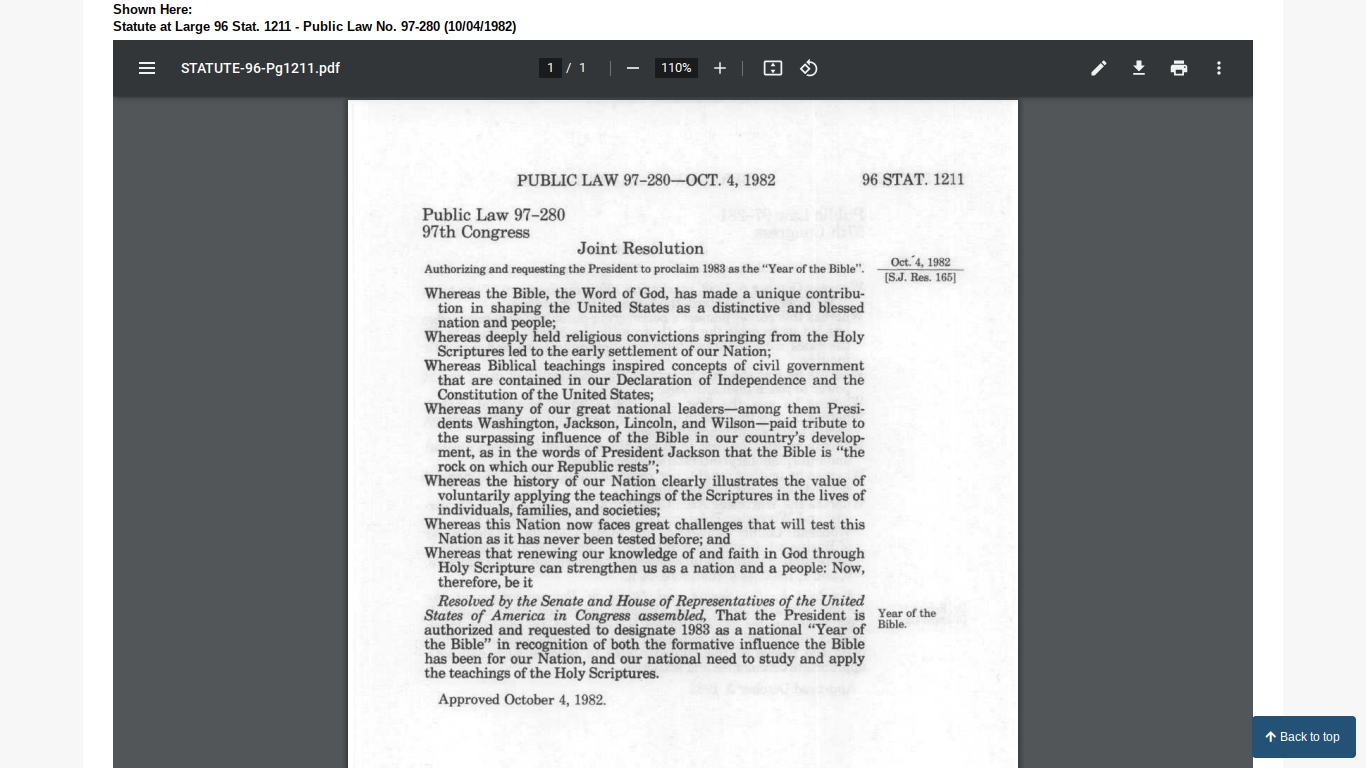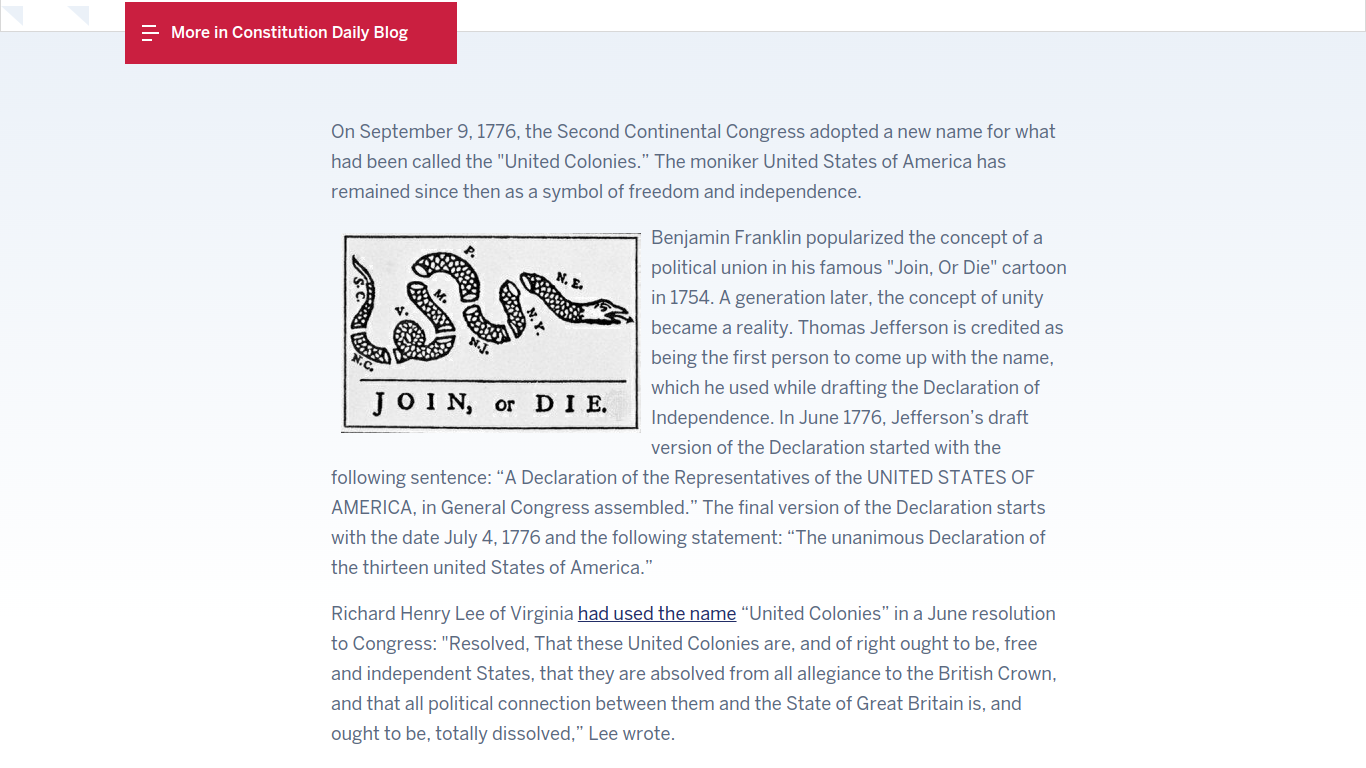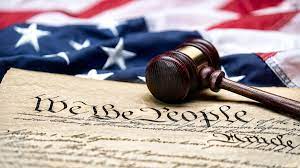Constitution 101 Curriculum
Constitution Center
William Jackson
Last Update há 4 meses
Learn the Constitution from the Apollo AI Bot
AI Overview
What does the Constitution say about bills of credit?
The Constitution prohibits states from issuing bills of credit. The Framers of the Constitution considered this prohibition essential. The Constitution also gives Congress the power to borrow money on the credit of the United States.What is State Sovereignty?
There are Bible Studies. Why not Constitution Studies?
The first module will introduces you to the Constitution’s text and to the skills necessary to engage in constitutional conversations. As you explore the Constitution throughout this course, it’s essential to separate your constitutional views from your political views and, in turn, to think about how the Constitution defines or limits the powers of the government. That is how constitutional lawyers, scholars, and judges read, interpret, and apply the Constitution.
"All Political Power is Inherent in the People"
97th Congress Joint Resolution
Public Law No. 97-21
July 9, 1981
95 STAT. 105
PREAMBLE TO THE CONSTITUTION
Preamble
The famous first 52 words of the Constitution introduce the articles and amendments that follow. "We the People of the United States, in Order to form a more perfect Union, establish Justice, insure domestic Tranquility, provide for the common defence, promote the general Welfare, and secure the Blessings of Liberty to ourselves and our Posterity, do ordain and establish this Constitution for the United States of America."
Articles
The seven articles make up the structural constitution, signed on September 17, 1787, and ratified on June 21, 1788.
Article I
Legislative Branch
Article II
Executive Branch
Article III
Judicial Branch
Article IV
States, Citizenship, New States
Article V
Amendment Process
Article VI
Debts, Supremacy, Oaths, Religious Tests
Article VII
Ratification
Amendments
There have been 27 amendments to the Constitution, beginning with the Bill of Rights, the first 10 amendments, ratified December 15, 1791 and they make up the Bill of Rights document we will learn more about later.
AMENDMENTS
The Bill of Rights is the first 10 amendments to the U.S. Constitution. These amendments guarantee essential rights and civil liberties, such as the freedom of religion, freedom of speech, freedom to assemble, the right to freedom of the press, the right to redress your government for grievances, the right to bear arms, trial by jury, and more, as well as reserving rights to the people and the states. After the Constitutional Convention, the absence of a bill of rights emerged as a central part of the ratification debates. Anti-Federalists, who opposed ratification, pointed to the missing bill of rights as a fatal flaw. Several states ratified the Constitution on the condition that a bill of rights be promptly added.
BILL OF RIGHTS
First Amendment
Freedom of Religion, Speech, Press, Assembly, and Petition
Second Amendment
Right to Bear Arms
Third Amendment
Quartering of Soldiers
Fourth Amendment
Search and Seizure
Fifth Amendment
Grand Jury, Double Jeopardy, Self Incrimination, Due Process, Takings
Sixth Amendment
Right to Speedy Trial by Jury, Witnesses, Counsel
Seventh Amendment
Jury Trial in Civil Lawsuits
Eighth Amendment
Excessive Fines, Cruel and Unusual Punishment
Ninth Amendment
Non-Enumerated Rights Retained by People
10th Amendment
Rights Reserved to States or People
POST BILL OF RIGHTS
11th Amendment
Suits Against States
12th Amendment
Election of President and Vice President
RECONSTRUCTION AMENDMENTS
13th Amendment
Abolition of Slavery
14th Amendment
Citizenship Rights, Equal Protection, Apportionment, Civil War Debt
15th Amendment
Right to Vote Not Denied by Race
POST RECONSTRUCTION AMENDMENTS
16th Amendment
Income Tax
17th Amendment
Popular Election of Senators
18th Amendment
Prohibition of Liquor
19th Amendment
Women’s Right to Vote
20th Amendment
Presidential Term and Succession, Assembly of Congress
21st Amendment
Repeal of Prohibition
22nd Amendment
Two-Term Limit on Presidency
23rd Amendment
Presidential Vote for D.C.
24th Amendment
Abolition of Poll Taxes
25th Amendment
Presidential Disability and Succession
26th Amendment
Right to Vote at Age 18
27th Amendment
Congressional Compensation
The Foundations of Law

Year of the Bible
97th Congress Joint Resolution
Public Law No. 97-280
October 4, 1982
96 STAT. 1211
"Public Law 97-280 Declares The Bible To Be The Word Of God."
101st Congress Joint Resolution
Public Law No. 101-209
December 7, 1989
103 STAT. 1838
"Public Law 101-209 Declares International Year of Bible Reading."
Join or Die

JOIN or DIE
Benjamin Franklin popularized the concept of a political union in his famous "Join, Or Die" cartoon in 1754. A generation later, the concept of unity became a reality. Thomas Jefferson is credited as being the first person to come up with the name, which he used while drafting the Declaration of Independence. In June 1776, Jefferson’s draft version of the Declaration started with the following sentence: “A Declaration of the Representatives of the UNITED STATES OF AMERICA, in General Congress assembled.” The final version of the Declaration starts with the date July 4, 1776 and the following statement: “The unanimous Declaration of the thirteen united States of America.”
LEE RESOLUTION
On June 7, 1776, Richard Henry Lee of Virginia, introduced this resolution in the Second Continental Congress proposing independence.
The Lee Resolution is where the "American Experiment" began. Richard Henry Lee of Virginia had used the name “United Colonies” in a June resolution to Congress: "Resolved, That these United Colonies are, and of right ought to be, free and independent States, that they are absolved from all allegiance to the British Crown, and that all political connection between them and the State of Great Britain is, and ought to be, totally dissolved,” Lee wrote. The Lee Resolution was passed by Congress. This was a call for the Declaration of Independence as we know it today.
So, the 1686 Bill of Rights in England, also called the English Bill of Rights, gave the settlers permission from the king to petition. This allowed for the Lee Resolution to come into existence. Then the Lee Resolution gave us the Declaration of Independence (a petition to the king), and then the Constitution and the Bill of Rights as we know it today.
Transcript
LEE RESOLUTION TRANSCRIPT
Resolved, That these United Colonies are, and of right ought to be, free and independent States, that they are absolved from all allegiance to the British Crown, and that all political connection between them and the State of Great Britain is, and ought to be, totally dissolved.
That it is expedient forthwith to take the most effectual measures for forming foreign Alliances.
That a plan of confederation be prepared and transmitted to the respective Colonies for their consideration and approbation.
Source archives.gov/milestone-documents/lee-resolution
Search the Constitution Help Center at constitution.tawk.help
Common Law Academy
Do you need help?
Video Call
Every Wednesday
7:00 PM
New York Time
URL
Video Call
Every Wednesday
12:00 Noon
New York Time
URL

